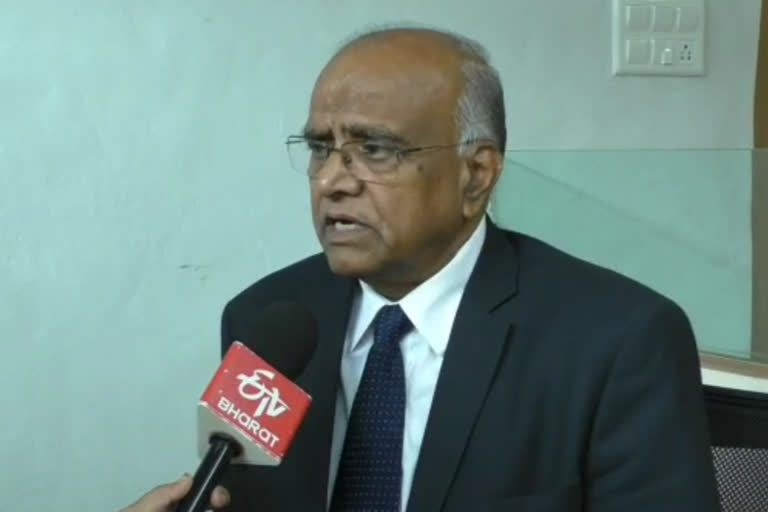Surat: There was a time when Russia refused to give cryogenic engine technology to India and the reason behind this was told to be international pressure. But later with hard work and passion, ISRO itself developed cryogenic engine technology.
A cryogenic engine/ cryogenic stage is the last stage of space launch vehicles that makes use of Cryogenics. Cryogenics is the study of the production and behaviour of materials at extremely low temperatures (below -150 degrees Centigrade) to lift and place heavier objects in space.
As India is gearing up for 2023 Gaganyaan Mission, ETV Bharat met N.K. Gupta, former ISRO scientist and Project Head of Cryogenic Technology. The scientist currently settled in Surat, Gujarat, elaborated on Gaganyaan, and how India emerged as a space power, among others.
Here is an excerpt from the interview with N.K. Gupta
Question: How important is the Cryogenic engine used in Gaganyaan?
Answer: There are three types of fuels in rockets, solid, liquid and Cryogenic. Cryogenic fuel has the highest potential and that's why they were used in large rockets and spacecraft. Cryogenic engines are very complex and it takes a lot of effort to develop them. For now, only four or five countries in the world have this cryogenic technology. When we were building cryogenic engines, we approached Russia for technology transfer first they agreed, but later, due to international pressure, they backed off.
Then we thought of building our cryogenic engine. Luckily, I got appointed as project head. Cryogenic engines use liquid hydrogen and liquid oxygen as fuel that too at very low temperatures. Hydrogen is at minus 253 centigrade and liquid oxygen is at minus 183 centigrade. Working at such a temperature gets very complex as the density of hydrogen is very low which requires a big tank to store it. In short, the cryogenic engine is a very complex system that we have developed successfully.
The rocket-based on this cryogenic engine is called GSLV Mark 3. Chandrayaan-II was also got launched from GSLV Mark 3 in the year 2019. Now, we are looking forward to launch our most ambitious project 'Gaganyaan'.
This program will be our first human mission under which we will be sending our astronauts to space. The mission was initially scheduled for 2022 as the country will be celebrating 'Azadi Ka Amrit Mahotsav', marking the 75th anniversary of Independence. The programme got slightly delayed due to COVID restrictions, but preparations are now in full swing to achieve the mission by 2023.
Could you please elaborate on yur contributions and ISRO's achievements?
I believe that all the achievements of ISRO are commendable. However, I don't believe in appreciating myself much. But as an outsider, I would say that ISRO has done an important job, no doubt about it. The world has recognised our achievements and all the space organisations working in the world today are ready to cooperate with us.
For example, in the year 2008, we sent Chandrayaan-1, in which many countries supported us. Then Chandrayaan-2 was sent, which had a cryogenic engine inside, and then we sent the Mars spacecraft in the year 2014.
The Gaganyaan project is also currently underway. Apart from that, we have achieved so many achievements that when we sent a spacecraft to Mars, it got successful in the first attempt itself and we become the first country in the world to achieve this success in a single attempt. While a country like America took seven attempts to mark this success.
How challenging is the Gaganyaan project ?
When we made the rocket, the only question that was asked was that you have made a rocket, but when will you send your own man to space? Now we can send humans to space, but bringing them back safely is a tough task and a lot of modifications are required to do so.
We achieved this in the year 2006 called Space Recovery Experiment. In this, we sent a satellite into space and after three-four days brought it back to earth. With the help of a parachute, we made satellites to land in the sea which made us realize that we can send anything to space and bring it back.
Bringing anything back from space is a very complicated process. Because of the aerodynamic heating, the temperature rises to a great extent. To avoid the temperature rise inside the spacecraft a thermal sill needs to be applied on the spacecraft. You will be remembering Kalpana Chawla, she also died in a similar accident.
Our first astronaut was Rakesh Sharma, who went to space in 1984 by a Russian rocket and now an Indian astronaut will go by an Indian rocket that to from Indian soil. This wonderful project will give a unique message to the country and the world.
Read : ISRO initiated research and development activities for active removal of space debris: Govt



